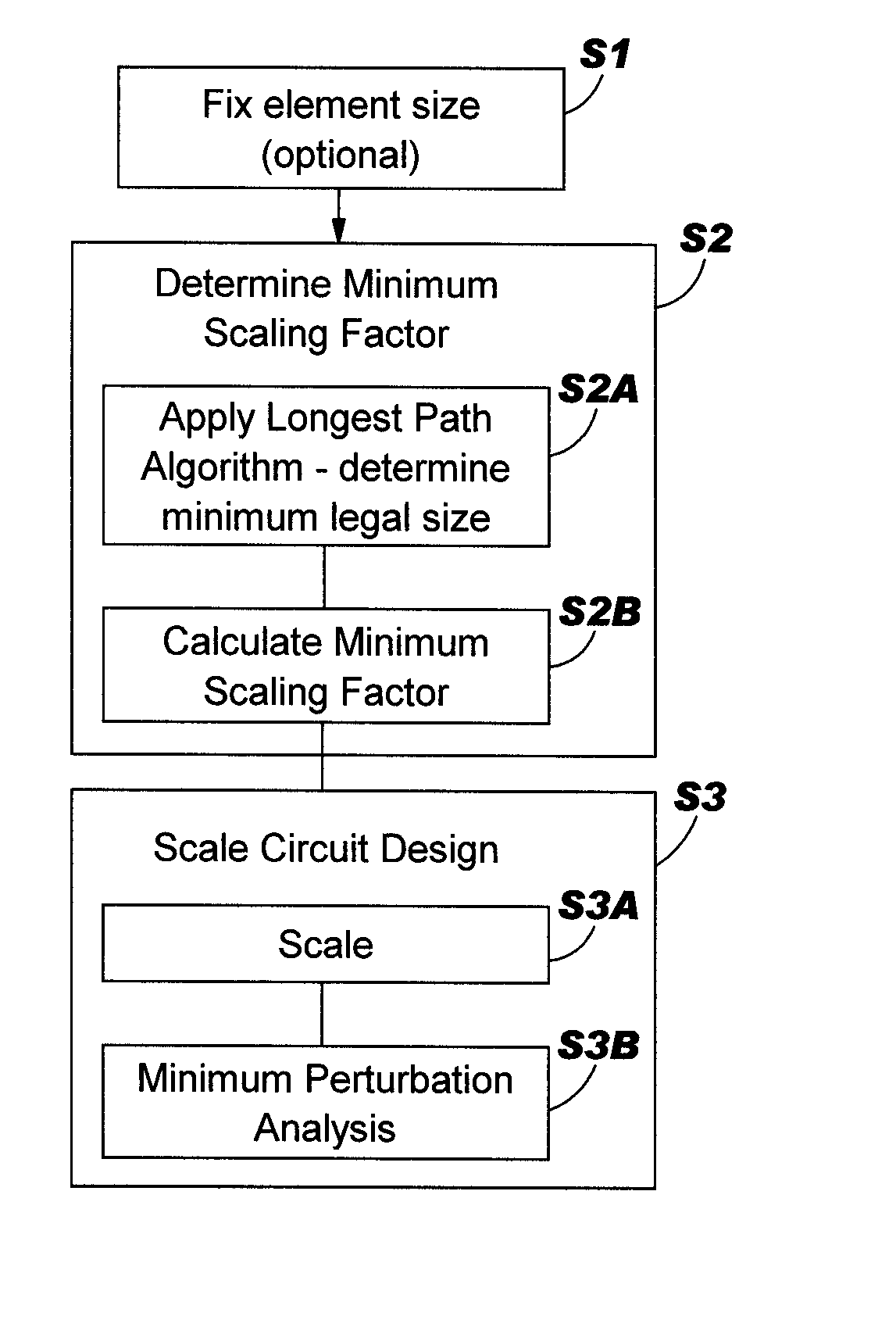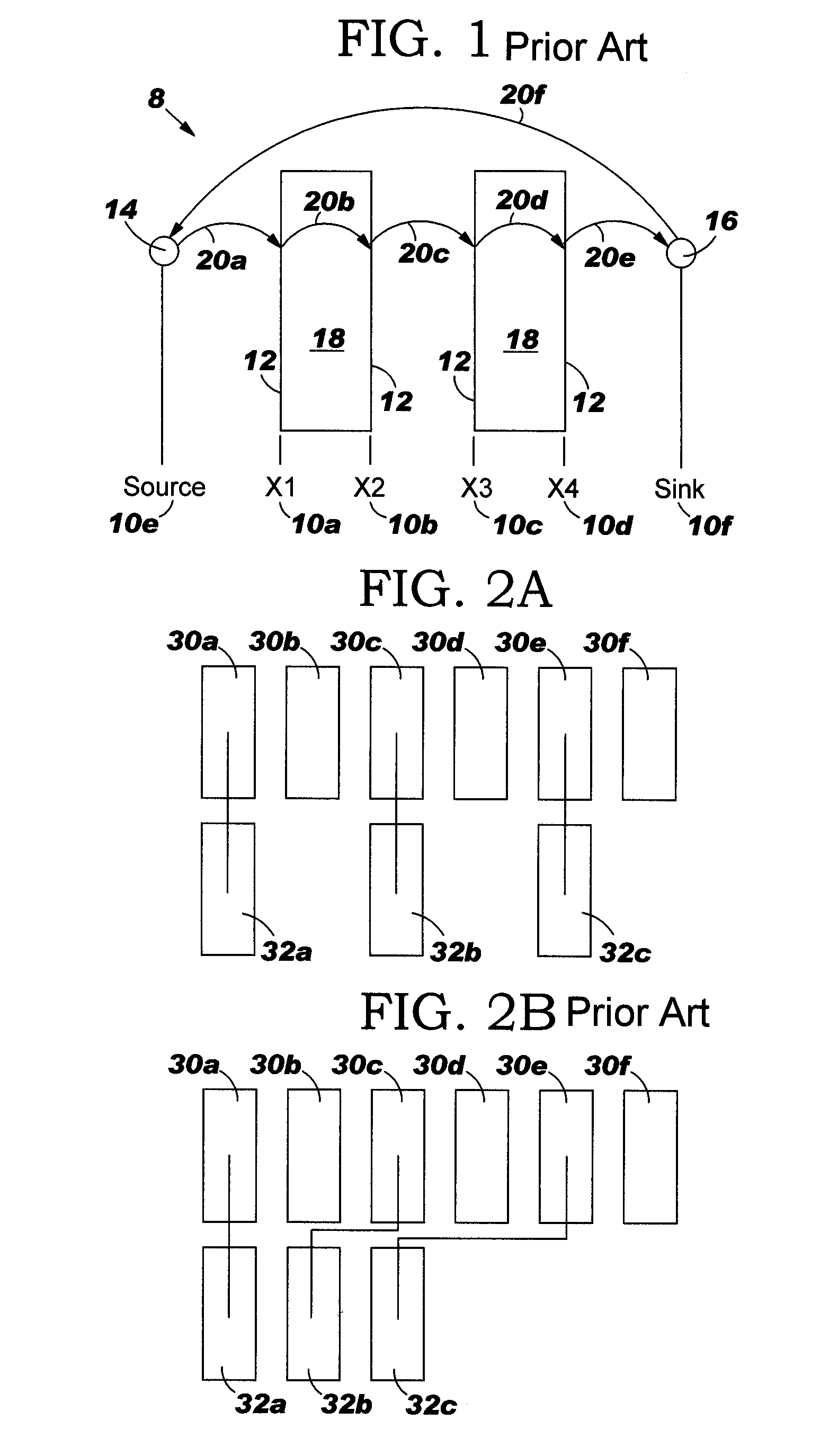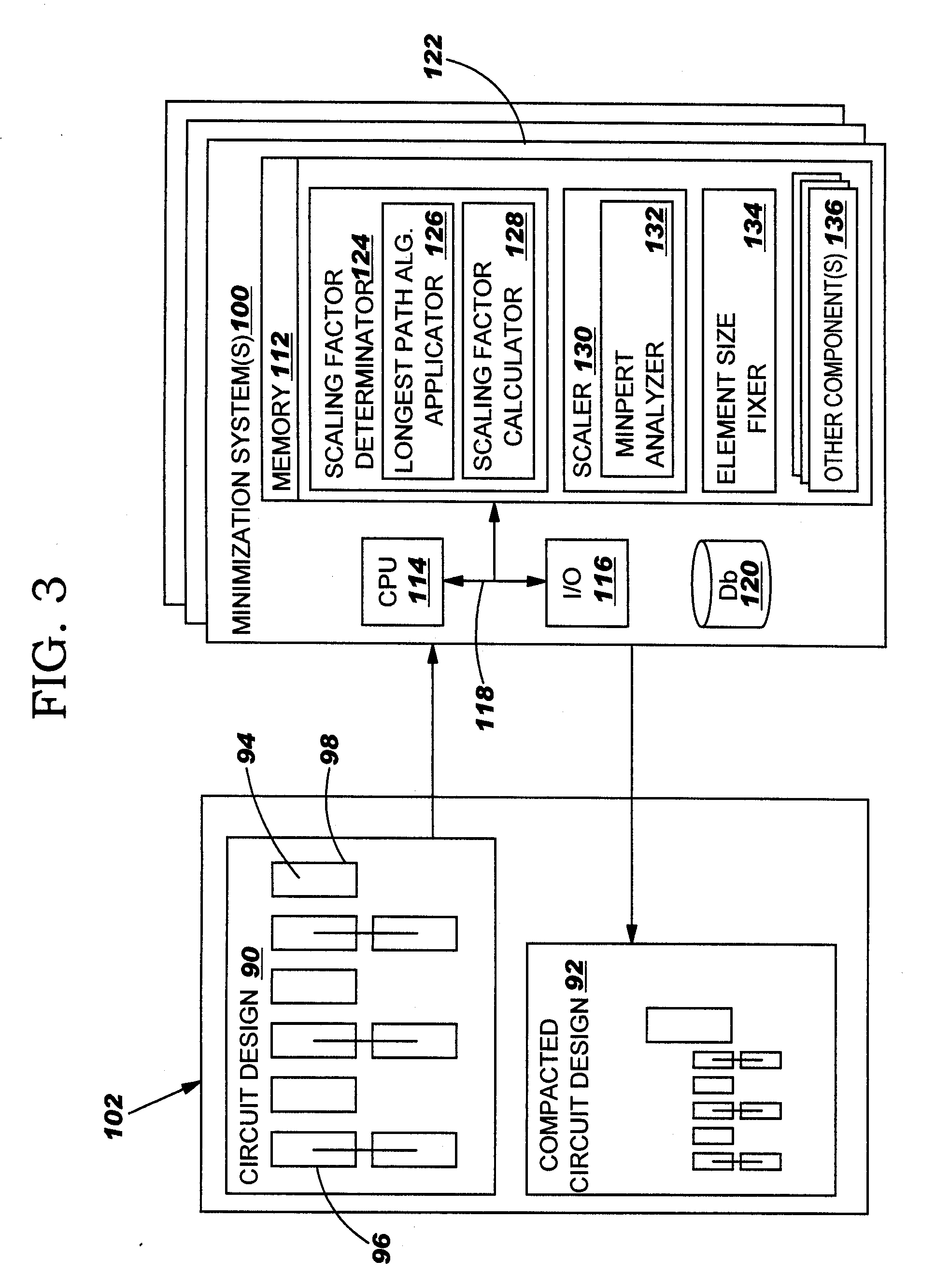Circuit area minimization using scaling
a circuit design and area minimization technology, applied in the field of circuit design, can solve the problems of inability to meet the constraints of users, inability to describe geometrically, and difficult to describe to a conventional compaction tool, and achieve the effect of reducing the size of the circuit design
- Summary
- Abstract
- Description
- Claims
- Application Information
AI Technical Summary
Benefits of technology
Problems solved by technology
Method used
Image
Examples
Embodiment Construction
[0025] With reference to the accompanying drawings, FIG. 3 is a block diagram of a circuit design area minimization system 100 (hereinafter “minimization system”) in accordance with the invention. Minimization system 100 includes a memory 112, a central processing unit (CPU) 114, input / output devices (I / O) 116 and a bus 118. A database 120 may also be provided for storage of data relative to processing tasks. Memory 112 includes a program product 122 that, when executed by CPU 114, comprises various functional capabilities described in further detail below. Memory 112 (and database 120) may comprise any known type of data storage system and / or transmission media, including magnetic media, optical media, random access memory (RAM), read only memory (ROM), a data object, etc. Moreover, memory 112 (and database 120) may reside at a single physical location comprising one or more types of data storage, or be distributed across a plurality of physical systems. CPU 114 may likewise compri...
PUM
 Login to View More
Login to View More Abstract
Description
Claims
Application Information
 Login to View More
Login to View More - R&D
- Intellectual Property
- Life Sciences
- Materials
- Tech Scout
- Unparalleled Data Quality
- Higher Quality Content
- 60% Fewer Hallucinations
Browse by: Latest US Patents, China's latest patents, Technical Efficacy Thesaurus, Application Domain, Technology Topic, Popular Technical Reports.
© 2025 PatSnap. All rights reserved.Legal|Privacy policy|Modern Slavery Act Transparency Statement|Sitemap|About US| Contact US: help@patsnap.com



